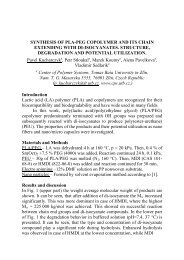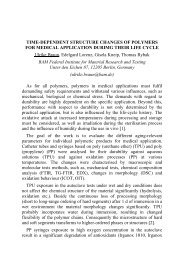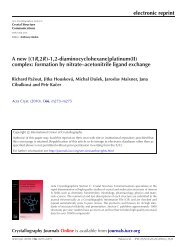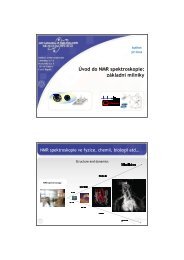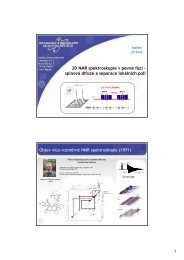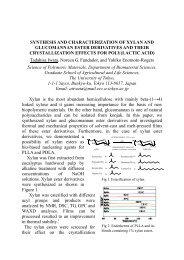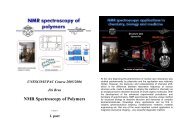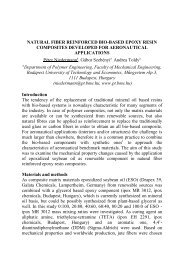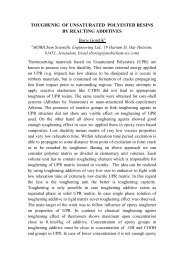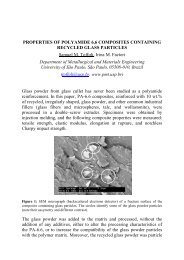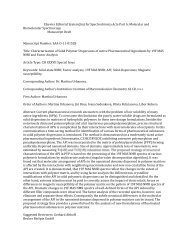polymery 2010 - Institute of Macromolecular Chemistry - Akademie ...
polymery 2010 - Institute of Macromolecular Chemistry - Akademie ...
polymery 2010 - Institute of Macromolecular Chemistry - Akademie ...
Create successful ePaper yourself
Turn your PDF publications into a flip-book with our unique Google optimized e-Paper software.
L-05<br />
PREPARATION OF NEW CINNAMOYL ESTERS OF VARIOUS<br />
POLYSACCHARIDES AND THEIR ANTIOXIDATIVE PROPERTIES<br />
L. Rychlá a , A. Ebringerová b , I. Sroková c , K. Csomorová a , J. Rychlý a<br />
a Polymer <strong>Institute</strong> <strong>of</strong> Slovak Academy <strong>of</strong> Sciences, Dúbravská cesta 9, 84 236 Bratislava,<br />
Slovakia (upolrych@savba.sk, http://www.polymer.sav.sk)<br />
b <strong>Institute</strong> <strong>of</strong> <strong>Chemistry</strong>, Center <strong>of</strong> Glycomics, Slovak Academy <strong>of</strong> Sciences, Dúbravská cesta 9,<br />
845 38 Bratislava, Slovakia<br />
c Faculty <strong>of</strong> Industrial Technologies, Trenčín University <strong>of</strong> A.Dubček, 02 001 Púchov,<br />
Slovakia<br />
One <strong>of</strong> the possible routes how to reduce worldwide increasing plastic wastes from crude oilbased<br />
materials is their replacement – at least partially - by biopolymers obtained from renewable<br />
resources. All components (additives, inhibitors, etc.) <strong>of</strong> fully biodegradable materials have to be<br />
bio-compatible, as well.<br />
Natural antioxidants extracted from different plants, herbs and spices represent an alternative to<br />
synthetic antioxidants. They are considered for stabilization <strong>of</strong> synthetic polymers as they are<br />
biologically degradable in nature. This is also the reason why they may be <strong>of</strong> interest in food<br />
industry and in medical packaging 1 . One <strong>of</strong> the first natural antioxidants used was α-tocopherol in<br />
LDPE 2 .<br />
In our earlier paper 3 we tested by-products containing polyphenols and tannins derived from grape<br />
processing in wine production as well as carotenoid-containing waste from tomatoes which were<br />
believed to have antioxidative potential in polypropylene 3 . DSC and Chemiluminescence analysis<br />
(CL) confirmed the antioxidant activity <strong>of</strong> these aditives, and provided the following order <strong>of</strong><br />
antioxidant efficiency: red grape seeds > white seeds > tomato extract. Hydroxytyrosol and αtocopherol<br />
(both as extracts from vegetable oils) 4 were considered as alternative natural inhibitors<br />
for polypropylene (PP) as well. Evaluation <strong>of</strong> their antioxidative performance and a comparison<br />
with the effect <strong>of</strong> phenolic inhibitor Irganox 1076 performed by CL represents Fig.1.<br />
26



